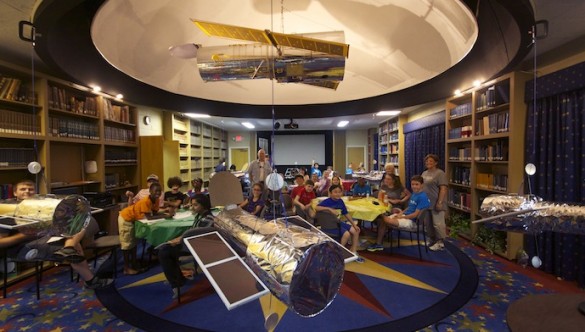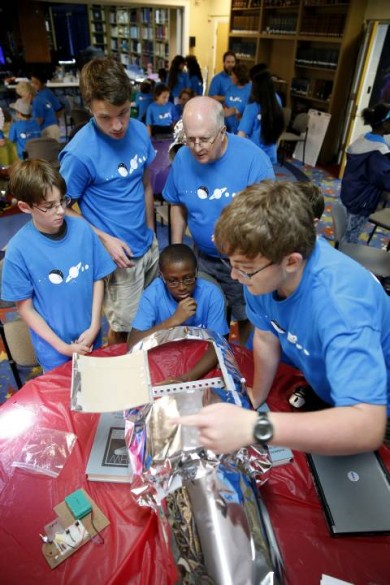
Campers will demonstrate functioning models of the Hubble Space Telescope at Dyer Observatory Friday, July 26, at 12:30 p.m.
Nashville-area middle-schoolers attending Dyer Observatory’s space camp are spending some time this summer building functioning scale models of the Hubble Space Telescope. On Friday, they’ll demonstrate the telescopes, accompanied by a presentation by Hubble’s founding project scientist C. R. (Bob) O’Dell, now Distinguished Research Professor of Astrophysics at Vanderbilt.

Dyer’s space camps have long been popular with local kids who want to learn more about the final frontier; but last year, the Dyer Observatory staff noticed that the campers didn’t know much about one of the most important tools of the trade.
Dyer Observatory director Rocky Alvey, outreach astronomer Billy Teets and volunteer Bob Schwiekert wanted to change that. With the theme “Understanding Hubble,” this year’s sessions focus on the tools astronomers use to study the universe. Campers have been learning how telescopes work and, since Dyer’s own telescope cannot be used during the day, campers are logging into telescopes located in Europe and Australia where it’s already night. The campers have also been learning from some of Vanderbilt’s top astronomers, including O’Dell and David Weintraub, professor of astronomy.
The core project of this year’s camp is the building of a functioning 1/12-scale model of Hubble complete with an optical system, camera, solar panels, steering system, and wrapped in a Mylar skin. Not only are they assembling the moving parts, but they are also wiring the electronics and programing the chips.
The actual Hubble Space Telescope (HST) is about the size of a large city bus; the models will be about three and a half feet long. When each model is complete, campers will be able to remotely aim it and take a photograph.
In addition to O’Dell, Hubble shares another connection with Vanderbilt: In 1924, the telescope’s namesake, Edwin Hubble, confirmed that the universe was much bigger than anyone realized. Part of Hubble’s calculations were based on a galaxy first described by Vanderbilt astronomer E. E. Barnard in 1884. Before Hubble’s discovery, “many thought the entire universe consisted only of the Milky Way and was about 300,000 light years in diameter,” explained Alvey. “With those measurements by Edwin Hubble, an infinitely large universe became a possibility.”

Dyer Observatory’s summer space camps, which include field trips to the U.S. Space and Rocket Center in Huntsville, Ala., are funded in part by a NASA Summer of Innovation grant. These grants support efforts across the country to bring STEM education to underserved middle-schoolers and promote ongoing scientific engagement outside of school. The camps are chiefly funded by the Space Telescope Science Institute, the NASA organization that operates the Hubble telescope, through education/public outreach grants that are made possible by researchers who have had successful HST proposals. This year’s camps were made possible by a joint collaboration of three separate research programs.
The presentation begins at 12:30 p.m. Friday, July 26, and will last approximately 45 minutes. Media are invited to attend.
Dyer Observatory is located in Brentwood at 1000 Oman Drive, just off Granny White Pike. Parking is available at the observatory.